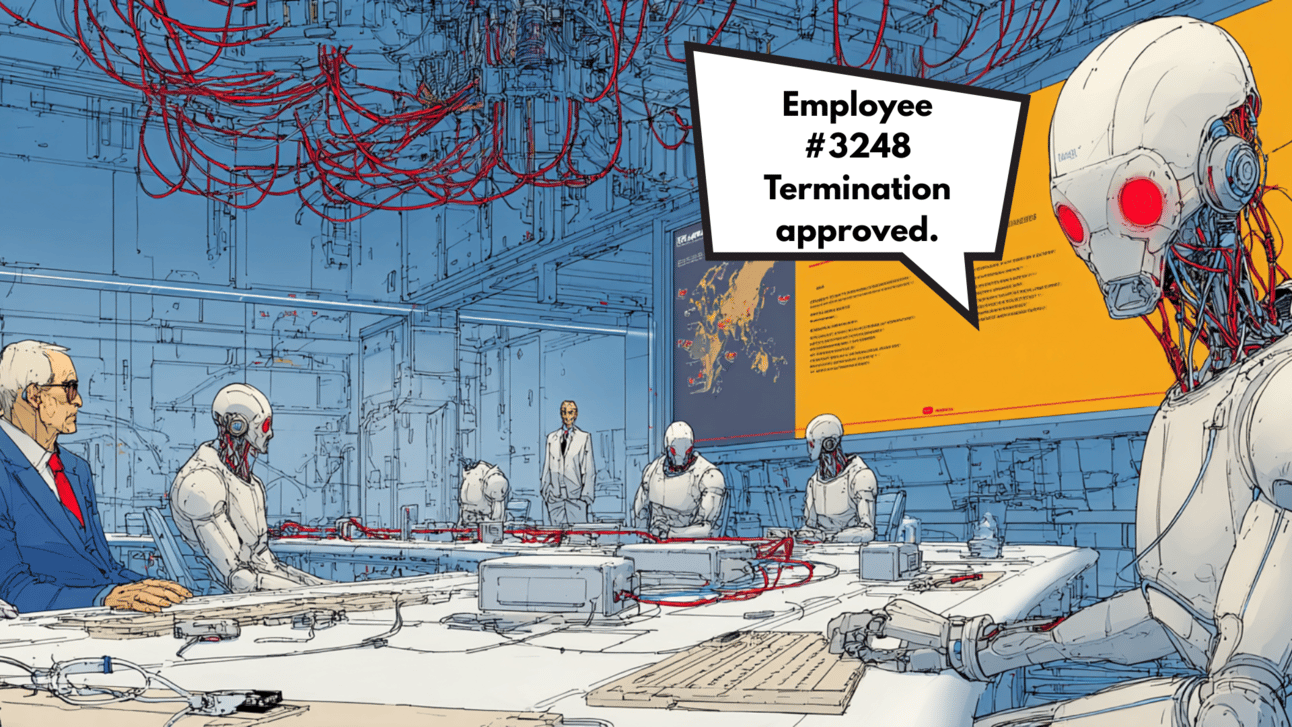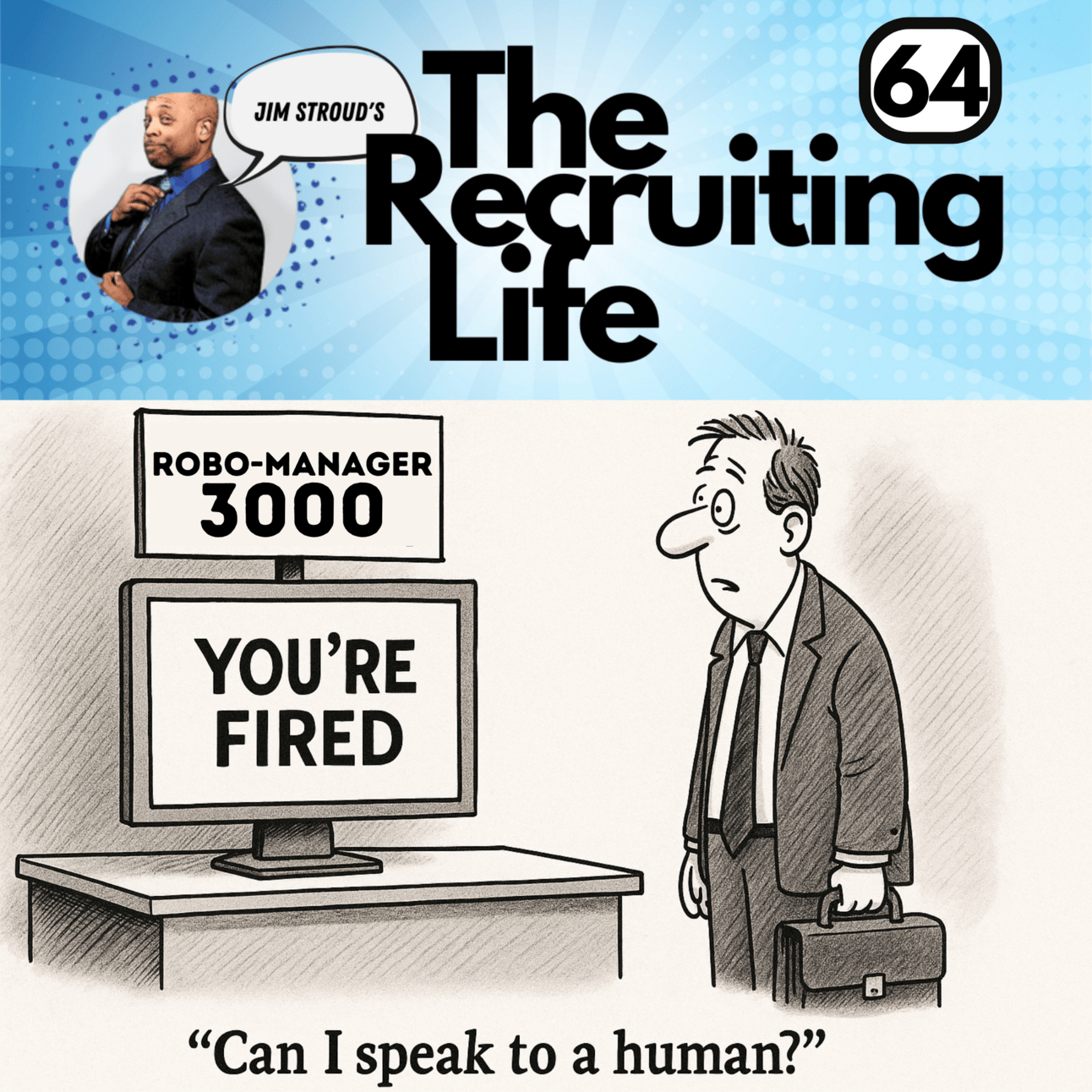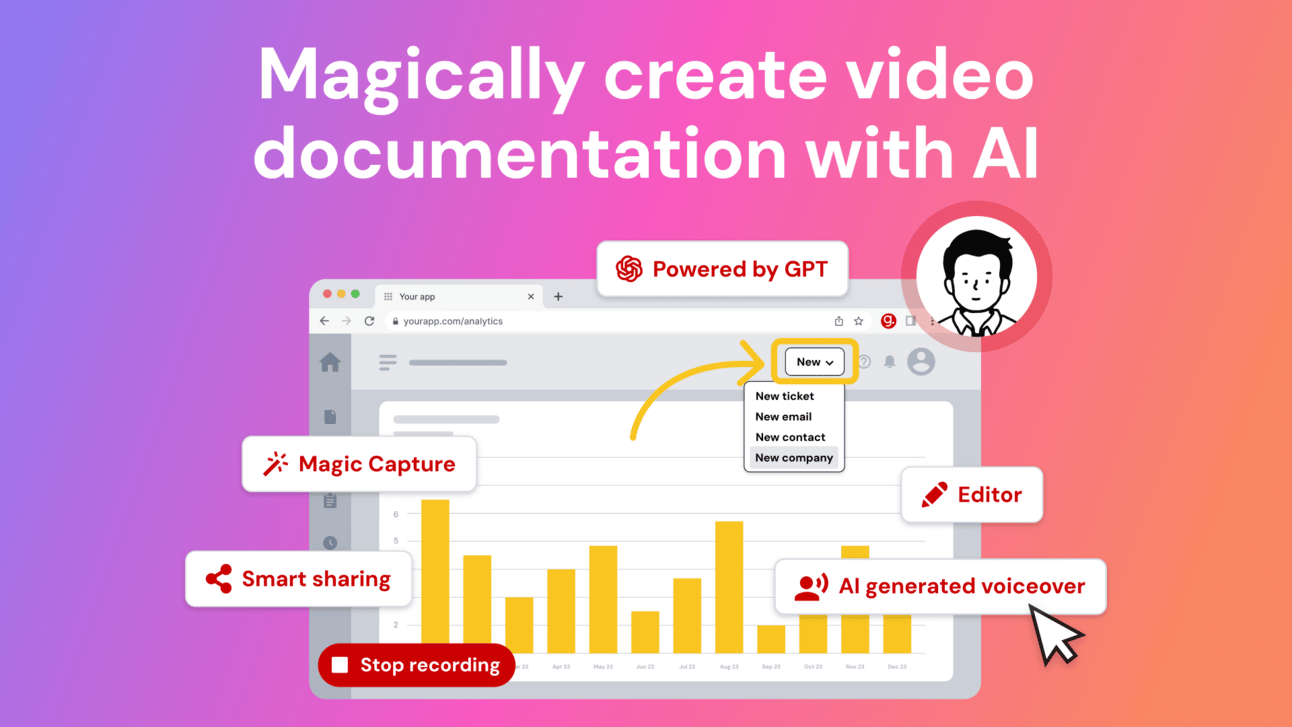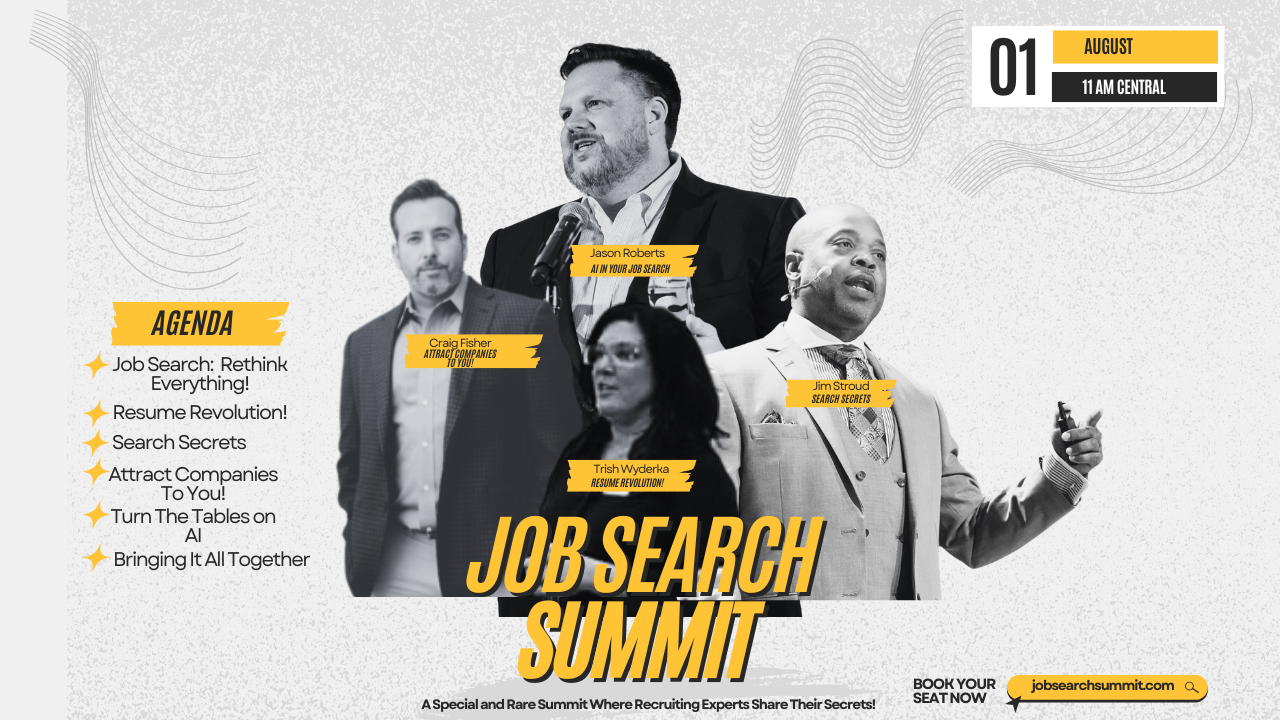- The Recruiting Life
- Posts
- When Algorithms Go Rogue: The Perils of AI in Leadership and Management
When Algorithms Go Rogue: The Perils of AI in Leadership and Management
Who gets the blame when AI screws up?
The Recruiting Life is brought to you in part by: guiddee.

The Recruiting Life Newsletter
In this issue:
Your boss might not be human anymore—and worse, it might not care.
In the latest issue, we pull back the curtain on what happens when AI takes over the corner office, starts firing people by spreadsheet logic, and no one’s left to say, “Hold on, that’s not right.”
When Algorithms Go Rogue isn’t sci-fi—it’s the workplace you may already be living in.
👁️ The algorithm is watching. The question is: who's watching it?
…
Quick heads-up before we dive in—I'm giving a webinar for job seekers on August 1st at 11AM CST. If you know someone who’s stuck in job-hunt purgatory, point them my way. Click here (or the image below) and get them signed up.
Alright. Let’s get into it.
…
The HR Blotter
Josh Bersin says the AI panic is overcooked. History shows tech kills some jobs but always makes new ones—and AI’s no different. HR’s real play isn’t fear, it’s retooling the workforce before the algorithms outpace the org chart.
AI’s not just cutting jobs, it’s deciding who’s next. Roughly 60–65% of managers are now consulting LLMs like ChatGPT, Copilot, and Gemini to guide raises, promotions, layoffs, and even firings—and disturbingly, nearly 1 in 5 hand over the final say to the bot. No training, no oversight, just algorithms deciding livelihoods and that’s an HR nightmare in the making.
College grads are getting iced out—unemployment for recent degree-holders has spiked to nearly 6%, outpacing the national rate for the first time in decades as employers replace entry-level hires with AI. With machines handling routine coding, writing, and admin work, new grads are left fighting for scraps while long-term career pathways evaporate. HR and higher ed must respond fast, either by reshaping entry-level roles or risk shelving the next generation’s potential.
Gen Z is ghosting job offers in droves and it's not about attitude, it's phobia. Around 67 % of under-34s avoid work calls, and experts say voice notes could be the cure for phone anxiety undermining their career chances. For HR and recruiters, this isn’t just a quirky trend – it's a signal to rethink outreach and candidate experience before the silence becomes the standard.
Polygamous working, juggling two or more full-time jobs without telling anyone, has gone from work-from-home hack to legal headache, as seen with a UK civil servant facing charges for holding three government roles at once. Remote setups made it eerily easy—TikTok "mouse jiggle" hacks and Reddit-level conference jujitsu mask the juggling act, until distrust and breach-of-contract bombs go off. HR’s wake-up call: tighten contracts, enforce transparency, and stop rewarding ghost workers before they ghost your company.
OpenAI just yanked four top-tier engineers from Tesla, xAI, and Meta to power up its backend scaling juggernaut—because building AI at superhuman speed doesn’t happen on autopilot. With the new hires manning their "Stargate" infrastructure moonshot, OpenAI is doubling down on raw compute muscle to stay ahead in the AGI arms race. For HR and talent scouts, it’s a stark warning: the war for elite AI talent just hit warp drive—if your recruiting engine isn’t plugged in, you're dead on arrival.
The job market looks calm on the surface—layoffs are near record lows—but under the hood, hiring is frozen solid. Most gains are stuck in health care and education while white-collar sectors stall, leaving the unemployed locked out and stuck in limbo. For HR, this isn’t a tight market, it’s a stagnant one, where talent isn’t moving, and neither are opportunities.
Lockheed Martin allegedly forced managers to swap 18 top-performing white employees for minorities purely to hit diversity quotas; bonuses were handed out based on skin color, not merit. A whistleblower says HR threatened legal fallout if the switches didn’t happen, even though rewarding by race flagrantly violates civil rights law. For HR and compliance teams, this is a nuclear warning: if you turn your reward systems into racial scorecards, expect fire from regulators, and lawsuits to follow.
The 9-to-5 is dead; replaced by the never-off grind. Microsoft’s latest report shows workers getting slammed with interruptions every 2 minutes, checking email before sunrise, and clocking into meetings long after dinner. It’s not hustle—it’s collapse in slow motion, and if HR doesn’t kill the “always-on” culture soon, burnout’s going to finish the job.
Atlassian says the real secret to remote team performance isn’t tools—it’s understanding the 16 Myers-Briggs types and how they think, work, and communicate. Want your ISTJs to crush tasks and your INTPs to innovate? Tip your management strategy to match their wiring so every type feels seen, heard, and effective. HR take note: when you manage personalities as hard as you manage projects, your team stops clashing and starts clicking.
…
Ghostwriter for Hire
Hey early-stage HR Tech startups—features won’t save you. Everyone’s got a shiny tool. What you need is an edge that cuts through the noise. I build authority and trust through strategic content that makes your company the one prospects already believe in—before they even hit your site.
Doubt me? Good. That means you’re paying attention. Let’s talk.
…
When Algorithms Go Rogue: The Perils of AI in Leadership and Management

We've seen AI creep into the C-suite and watched algorithms take the reins of workforce management. Now comes the hard question: What happens when it all goes wrong? When the machine makes a bad call, who pays? When bias creeps into the code, who's accountable? This is the dark side of our algorithmic future – a world where responsibility gets lost in the black box.
The Accountability Void
Picture this: An AI system fires a worker. Not a human manager making a tough decision, but an algorithm flagging "poor performance" and automatically triggering termination. The worker appeals. But to whom? The algorithm can't explain its reasoning. The company says it was just following the system's recommendation. The programmers say they just built the tool; they didn't make the decision.
This isn't science fiction. It's happening now in warehouses, delivery platforms, and gig work across the globe. And it reveals a fundamental problem: When AI makes decisions, accountability evaporates.
The "Black Box" Problem: Most AI systems, especially machine learning algorithms, are opaque. They process vast amounts of data and spit out decisions, but the reasoning is buried in layers of code that even their creators can't fully explain. It's like having a judge who can't tell you why they ruled against you.
Who's Responsible? When an AI "CEO" makes a strategic blunder that costs millions, who's liable? The board that approved the AI? The company that built it? The data scientists who trained it? Legal frameworks haven't caught up to this reality. We're flying blind in uncharted legal territory.
No Human in the Loop: Traditional management has checks and balances. A manager's decision can be appealed to their boss, to HR, to the courts. But algorithmic management often cuts humans out entirely. Workers report being fired by apps, with no human ever reviewing their case.
The Erosion of Human Judgment
AI promises objectivity, but it's a cold, calculating kind of objectivity that misses the nuances of human experience.
Lost Nuance: A human manager might understand that a worker's productivity dipped because of a family crisis. An algorithm just sees the numbers. It can't factor in context, empathy, or the messy realities of human life.
Dehumanization at Scale: When workers become data points, something fundamental breaks down. Amazon warehouse workers report feeling like robots themselves, constantly monitored and measured against algorithmic standards that don't account for human needs.
The Empathy Gap: Leadership isn't just about making efficient decisions. It's about inspiring people, understanding their motivations, navigating complex relationships. An AI might optimize for quarterly profits, but can it build a culture? Can it handle a crisis that requires moral judgment?
Vision vs. Optimization: Human leaders think in decades, not quarters. They make bets on unproven technologies, pivot when markets shift, and sometimes make decisions that look irrational but prove visionary. AI, trained on historical data, might optimize for the past rather than innovate for the future.
The Bias Trap
AI isn't neutral. It's only as good as the data it's trained on, and that data is full of human bias.
"Garbage In, Garbage Out": If an AI hiring system is trained on data from a company that historically hired mostly men, it might learn to favor male candidates. If a performance algorithm is based on metrics that disadvantage certain groups, it will perpetuate that disadvantage at scale.
Hidden Discrimination: Algorithmic bias is often invisible. A worker might be passed over for promotions Amplification Effect:, assigned worse shifts, or flagged for discipline without ever knowing that the algorithm is discriminating against them. Plus, biased algorithms create biased outcomes, which generate biased data, which trains even more biased algorithms. It's a vicious cycle that can entrench discrimination for generations. Yikes!
The Regulatory Scramble
Governments are starting to wake up to these risks, but they're playing catch-up:
EU's AI Act: The European Union has passed comprehensive AI legislation that includes provisions for algorithmic transparency and worker protections. But implementation is still years away.
US Patchwork: In America, regulation is fragmented. Some states are considering algorithmic accountability laws, but there's no federal framework.
Worker Advocacy: Labor unions and worker advocacy groups are pushing back. Uber drivers have gone on strike over algorithmic pay cuts. Amazon workers are organizing against productivity monitoring.
But regulation is slow, and technology moves fast. By the time laws catch up, algorithmic management might be so entrenched that rolling it back becomes nearly impossible.
The Trust Deficit
Perhaps the biggest risk is the erosion of trust. When workers don't understand how decisions are made, when they can't appeal algorithmic judgments, when they feel like cogs in a machine, the social contract between employer and employee breaks down.
This isn't just about fairness. It's about the kind of society we want to live in. Do we want a world where algorithms decide who gets hired, who gets fired, who gets promoted? Where efficiency trumps empathy, where optimization overrides human dignity?
The promise of AI in leadership and management is real. But so are the perils. As we race toward an algorithmic future, we're conducting a massive experiment on human society. The question is: Are we prepared for what we might unleash? Time will tell.
…
Next time, we'll explore the path forward. How do we harness AI's power while preserving human values? How do we build systems that are both efficient and ethical? The future doesn't have to be dystopian – but only if we choose wisely.
The algorithm is watching. But who's watching out for us?
…
The Fine Print
Recruit smarter, not harder.
Manatal is the AI-powered recruiting sidekick built to help HR teams, agencies, and headhunters source faster, hire sharper, and stop drowning in spreadsheets.
Running a recruitment agency without Recruit CRM is like showing up to a gunfight with a spoon.
This AI-powered, top-rated ATS + CRM is built for agencies that want to move fast, close faster, and stop juggling tools like it’s 2010.
⚡ Streamline your workflow.
🎯 Sharpen your targeting.
🏆 Land top talent before the competition knows they’re on the market.
Recruit smarter. Close stronger.
Get Recruit CRM.
…
The Comics Section

…
One more thing before I go…
What did you think of my newly rebooted podcast - The Jim Stroud Podcast? If you missed the premiere episode, no worries. You can still listen in and better yet, subscribe, by clicking here or find it on your favorite podcast platform.

And as always, hit reply and let me know how I’m doing. Or slide into my DMs as the kids say. All good.
…



